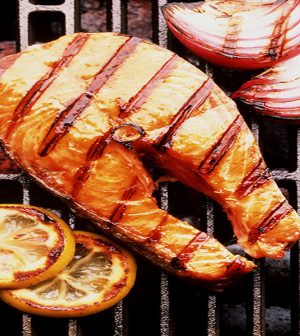- How Daily Prunes Can Influence Cholesterol and Inflammation
- When to Take B12 for Better Absorption and Energy
- Epsom Salts: Health Benefits and Uses
- See What Saffron Can Do for Sleep and Heart Health
- 6 Common Mistakes to Avoid Before Your Physical
- Can Sweating Really Help You Beat a Cold?
- Strengthening Your Relationship: Practical Strategies
- Skip Storing This Everyday Product in the Fridge Door
- Green Tea + B3 Pairing May Boost Brain Health
- Navigating Your Midlife Crisis: Embracing New Possibilities
The 411 on Unsaturated Fats

Doctors may be as confused about what dietary advice to pass on to their patients as the patients themselves — even when it comes to protecting against heart disease through diet, according to U.S., British and Italian reports.
Part of the problem is the continuing lack of nutrition education offered in medical schools. Another is the lack of time doctors have to spend with patients. But one piece of information that is getting through is to eat less saturated fat and more unsaturated fat — a better replacement strategy than eating “low-fat” packaged foods that are actually very high in refined carbohydrates, such as sugar.
But which unsaturated fats should you choose from?
First, know that there are two main types: monounsaturated and polyunsaturated. Most foods high in unsaturated fats contain both, though some have more of one than the other. For instance, avocados, nuts and olive and canola oils are higher in monounsaturated fats.
You may be familiar with polyunsaturated fats containing the omega-3 fatty acids eicosapentaenoic acid (EPA) and docosahexaenoic acid (DHA). You may have also heard about research disproving the heart-health effects of omega-3 supplements. However, the body still needs omega-3s for good health, and getting them directly from food, not capsules, is important. EPA and DHA are found primarily in fatty fish, so aim to eat 8 ounces of seafood a week, with choices like salmon, mackerel, sardines, anchovies and herring. You can also get the omega-3 alpha-linolenic acid (ALA) from some plant-based foods, primarily walnuts, sunflower seeds and oil, sesame and pumpkin seeds, and chia and flax seeds. The body doesn’t use ALA as easily as it does EPA and DHA, but it’s still valuable.
Less well-known are the omega-6 fatty acids. They, too, are in many nuts and seeds, but also in corn and soybean oils, heavily used in packaged foods like chips. Getting too many omega-6s can be a problem, especially if they outweigh the omega-3s in your diet, another reason to limit processed foods.
More information
The Linus Pauling Institute at Oregon State University has more on essential fatty acids.
Source: HealthDay
Copyright © 2026 HealthDay. All rights reserved.










